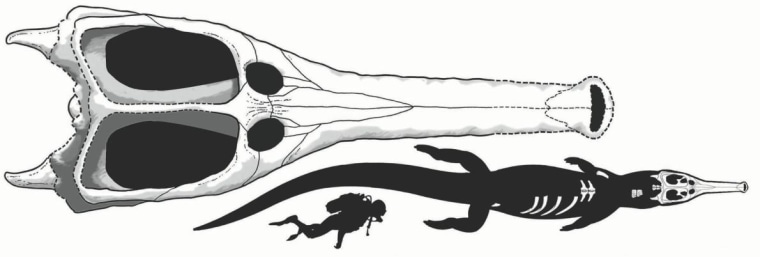In a recently published paper in the Cretaceous Research journal (yes, you read that correctly), a team paleontologists report finding the fossilized bones of a giant crocodile in the Tunisian desert which overturns the accepted theory that its class of replies went extinct at the end of the Jurassic Period.
Based on fossil findings, the crocodile was an estimated 30 feet in length and likely weighed up to three tons. It has been christened Machimosaurus rex. Members of its group were thought to have gone extinct over 150 million years ago, but the fossil has been dated to 130 million years ago, so paleontologist will need to re-examine their evidence to explain this discrepancy.

Meanwhile try to imagine what it must have been like to have this thing swim up along side you back then. This figure shows a scuba diver along side an illustration of one for reference (the skull is also blown up for detail). And if you really want to get a sense of this croc in its natural habitat, check out the works of scientific illustrator, Davide Bonadonna (third image in). I think I'll stick to swimming pools from now on.
National Geographic put together a great short video on this exciting news.
Here's some more geek from the week:
- The origin of our coal is thanks to the late arrival of bacteria. [VIDEO]
- The forensics of contact lenses help solve a murder mystery.
- Science says all those ums and uhs when you speak might not be a bad thing after all.
- What would happen if you bought every Powerball ticket combo possible?
- This animated map of the U.S. shows just how much wealth is in the coastal cities.
- Google street view now includes the miniature railroad world of Hamburg's Miniatur Wunderland.
- The physics of giant soap bubbles, including ones with small children in the center.
- This undergrad at Southern Illinois University just built a 40W laser gun. [VIDEO]
- We'll probably never hear from ESA's Philae lander on Comet 67P again.
Keep on geeking!
@Summer_Ash, In-house Astrophysicist
